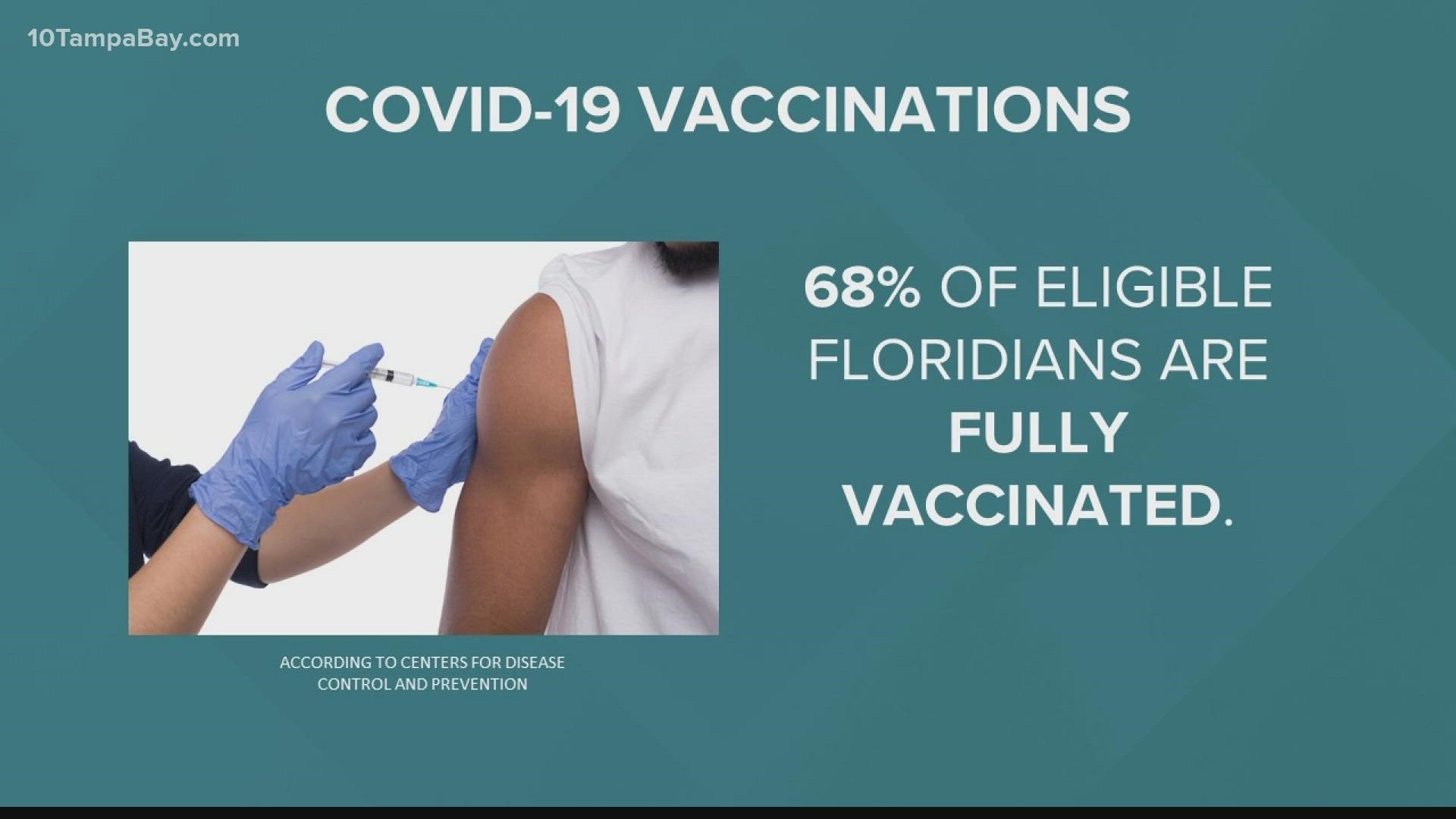TAMPA, Fla. — Getting the facts about Florida's COVID metrics has been an ongoing saga complete with finger-pointing, politically charged opinions and a wealth of misinformation.
Dr. Jason Salemi, an associate professor of epidemiology at the University of South Florida has been charting COVID data since May 2020. His goal is to make information accessible, easy to understand and interactive.
What we lost
The Florida Department of Health stopped producing a daily COVID-19 report in June 2021. This made it harder and more confusing for journalists, scientists and members of the public to get information about COVID-19 in their neighborhoods and communities.
But the data was never gone or hidden. The Florida Department of Health still had to submit information to the Centers for Disease Control and Prevention.
In June, just before the delta variant started to surge in Florida, another important metric seemed to vanish on a federal report — COVID-19 deaths by county.
"If I had to take an educated guess, I believe it was a data flow issue. It wouldn’t be the first time this happened," Salemi said. "The CDC is trying to assemble information from all the different jurisdictions across the country."
Now, some of it is back
In mid-September, Salemi noticed that the weekly metric started showing up again, something he's happy about.
Salemi said the public was always able to get weekly death data by county, but it was coming from a different federal report that tracks deaths by place of death not by place of residence. This can be misleading if you lived in a rural county but died in a hospital in a populated county.
Regardless, that data is back — and you can find it yourself on the CDC website.
There have been 49 deaths in Hillsborough County from Oct. 11-17.
Where we're at
Looking at all this data can be overwhelming and confusing, so here's the breakdown from two epidemiologists closely following COVID trends in Florida and Tampa Bay:
Dr. Jill Roberts: "We got hit hard with delta really early. We were pretty much the example of how to do it wrong. Eventually, if you have enough cases, you’re going to see herd immunity effects so herd immunity is going to drop your overall number of cases in the population and that’s what we’re seeing."
Dr. Jason Salemi: "When you look at the numbers in Florida, we’re in such a better place than we were a couple of weeks ago. It’s just unfortunate that so many people got infected, hospitalized, so many lost their lives to achieve this level of immunity."
Two caveats
Roberts warns that a new, highly transmissible variant could quickly reverse our trends. Getting vaccinated is the best way to protect yourself. She also points out that metrics aren't perfect.
Many people are taking at-home tests and not reporting their results.
Salemi says hospitalization data should always be contextualized because oftentimes people are attending hospitals outside of the counties in which they live. This can overstate the COVID-19 picture in an urban area and understate what's happening in rural communities.

